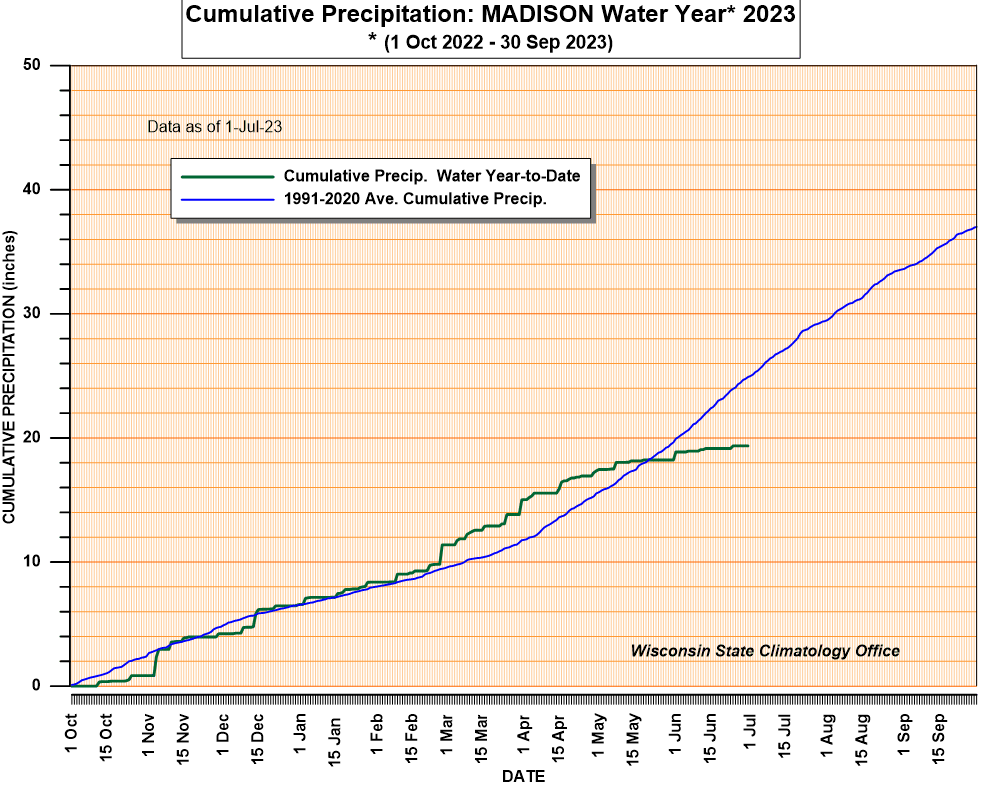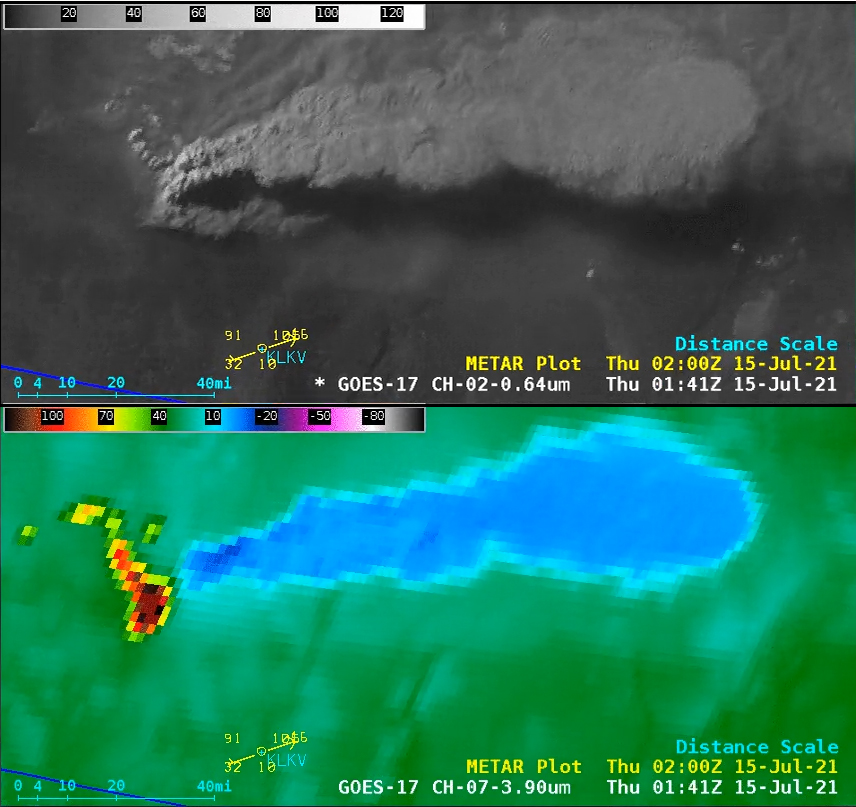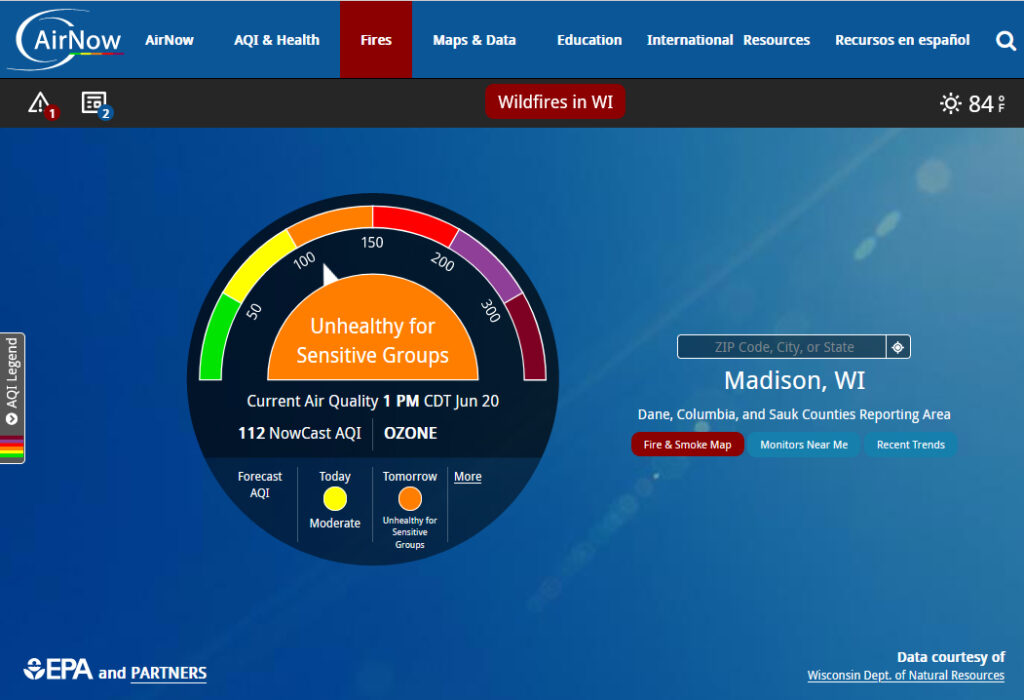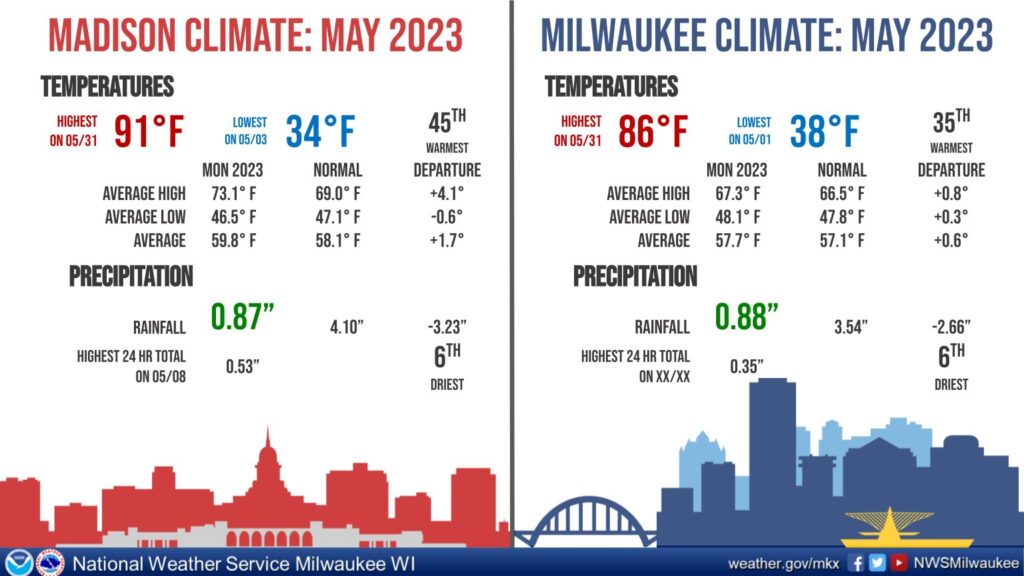While we all contended with the remarkable and dangerous smoke in the sky this past week, we also wrapped up a record dry spell in Madison’s history.
The 61 days of May and June 2023 were the driest May and June ever, with a paltry 2.01 inches of total precipitation falling. The next closest rival on this ignominious list occurred in May and June 1992, when only 2.65 inches of rain fell during the two months. Individually, May and June were the sixth-driest May and June in Madison’s history, suggesting how rare it is for both of them to be so void of precipitation.
The consequences of this extended dry period are everywhere — lawns are brown and looking like it’s mid-August, the ground is hard and cracking in some spots, and leaves are falling from some trees well before their time. Over the course of these two dry months, we have fallen 7.37 inches behind in precipitation — May/June averages 9.38 inches.
Since the annual average for the year is 36.9 inches, even if the rest of the year finds its way back to normal, we will end up just shy of 20% below our normal annual precipitation.
As we have said in prior columns, this local dryness is part of a larger regional dryness that has sparked an early initiation to eastern Canada’s wildfire season, which has polluted our skies intermittently during the past month. Perhaps the only good thing about this record dryness is that it seems to have kept the mosquitoes at bay for the time being.
Steve Ackerman and Jonathan Martin, professors in the UW-Madison department of atmospheric and oceanic sciences, are guests on WHA radio (970 AM) at 11:45 a.m. the last Monday of each month. Send them your questions at stevea@ssec.wisc.edu or jemarti1@wisc.edu.






